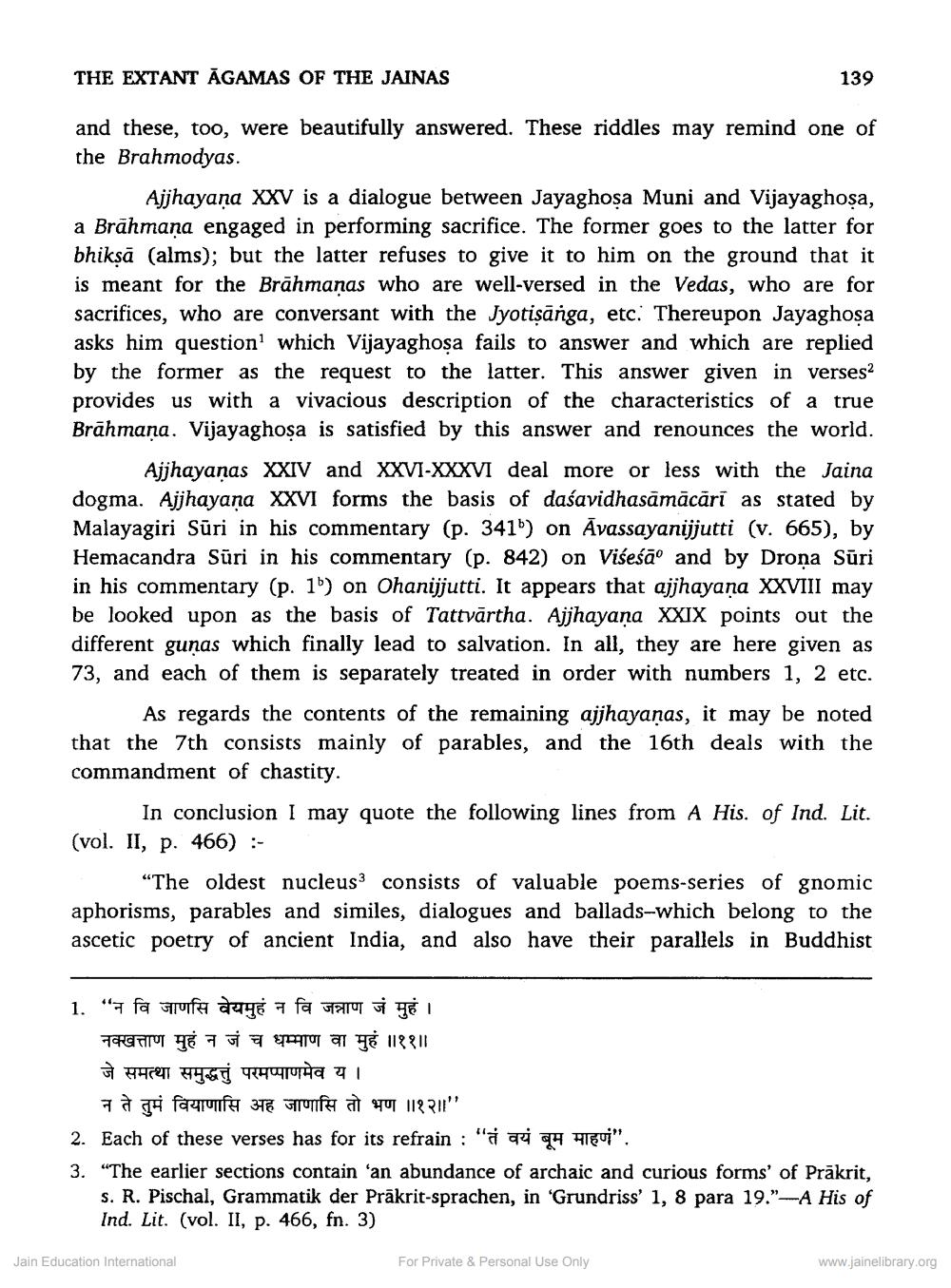________________
THE EXTANT AGAMAS OF THE JAINAS
139
and these, too, were beautifully answered. These riddles may remind one of the Brahmodyas.
Ajjhayana XXV is a dialogue between Jayaghosa Muni and Vijayaghosa, a Brāhmaṇa engaged in performing sacrifice. The former goes to the latter for bhiksā (alms); but the latter refuses to give it to him on the ground that it is meant for the Brāhmanas who are well-versed in the Vedas, who are for sacrifices, who are conversant with the Jyotisānga, etc. Thereupon Jayaghosa asks him question which Vijayaghosa fails to answer and which are replied by the former as the request to the latter. This answer given in verses provides us with a vivacious description of the characteristics of a true Brāhmana. Vijayaghosa is satisfied by this answer and renounces the world.
Ajjhayanas XXIV and XXVI-XXXVI deal more or less with the Jaina dogma. Ajjhayana XXVI forms the basis of daśavidhasāmācāri as stated by Malayagiri Sūri in his commentary (p. 341") on Avassayanijjutti (v. 665), by Hemacandra Sūri in his commentary (p. 842) on Viseśão and by Drona Sūri in his commentary (p. 1b) on Ohanijjutti. It appears that ajjhayana XXVIII may be looked upon as the basis of Tattvārtha. Ajjhayaņa XXIX points out the different gunas which finally lead to salvation. In all, they are here given as 73, and each of them is separately treated in order with numbers 1, 2 etc.
As regards the contents of the remaining ajjhayaņas, it may be noted that the 7th consists mainly of parables, and the 16th deals with the commandment of chastity.
In conclusion I may quote the following lines from A His. of Ind. Lit. (vol. II, p. 466) :
"The oldest nucleus consists of valuable poems-series of gnomic aphorisms, parables and similes, dialogues and ballads-which belong to the ascetic poetry of ancient India, and also have their parallels in Buddhist
1. "fa fa daug 7 fa a J TEI
नक्खत्ताण मुहं न जं च धम्माण वा मुहं ॥११॥ जे समत्था समुद्धत्तुं परमप्पाणमेव य ।
न ते तुमं वियाणासि अह जाणासि तो भण ॥१२॥" 2. Each of these verses has for its refrain : "Ha a hlevi". 3. "The earlier sections contain 'an abundance of archaic and curious forms' of Prākrit,
s. R. Pischal, Grammatik der Prākrit-sprachen, in 'Grundriss' 1, 8 para 19."-A His of Ind. Lit. (vol. II, p. 466, fn. 3)
Jain Education International
For Private & Personal Use Only
www.jainelibrary.org




